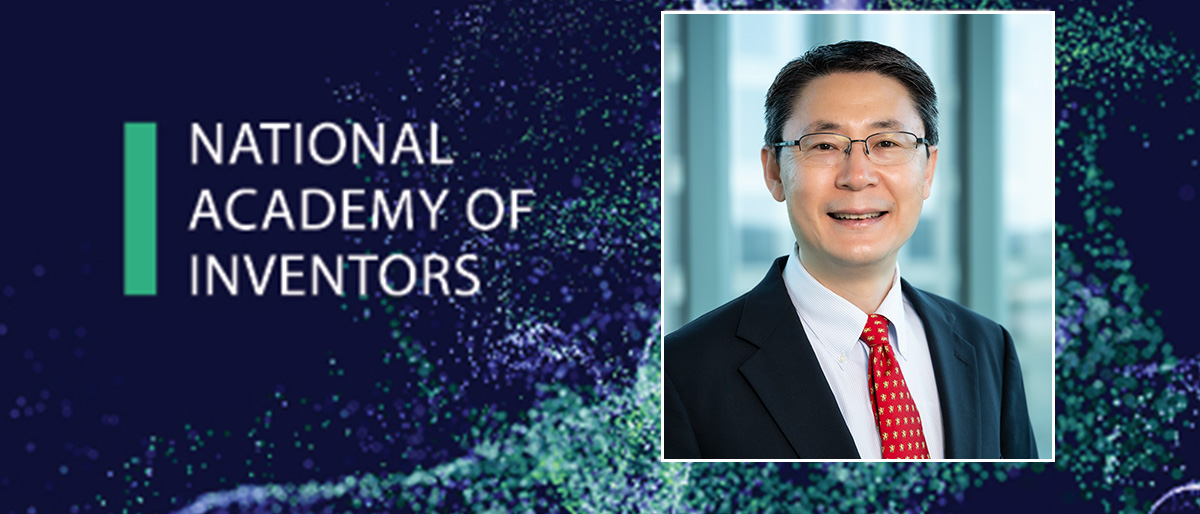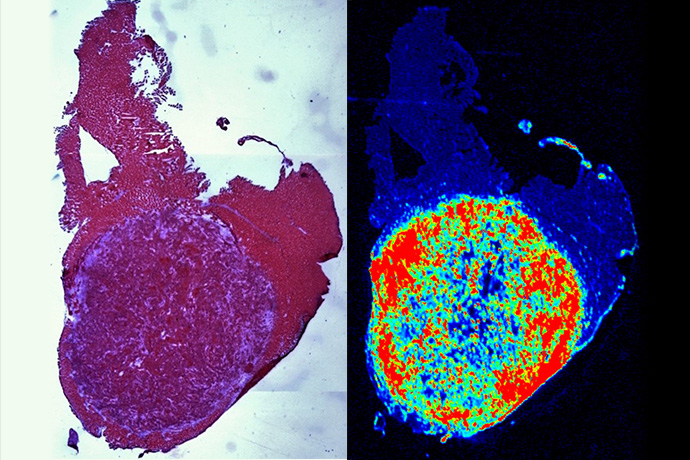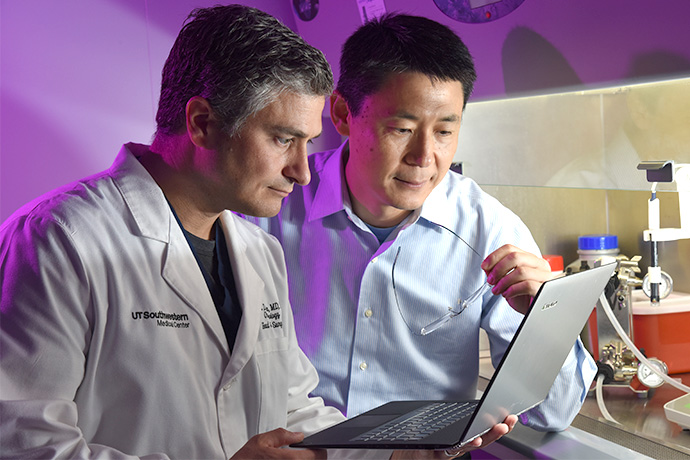Q&A with Jinming Gao, Ph.D., new Fellow of the National Academy of Inventors

In recognition of his work to develop nanotechnology platforms that improve cancer detection and treatment, Jinming Gao, Ph.D., Professor of Biomedical Engineering, Cell Biology, Otolaryngology – Head & Neck Surgery, and Pharmacology, has been selected as a Fellow of the National Academy of Inventors (NAI).
A prolific researcher, Dr. Gao holds 16 patents in the United States and 72 worldwide in the fields of polymer biomaterials, nanoparticle drug delivery, tumor surgical imaging, and cancer immunotherapy.
“It is an honor to join this talented and accomplished group of international innovators striving to develop new technologies to benefit society,” said Dr. Gao, one of 162 researchers and inventors worldwide who became an NAI Fellow in 2023.
Considered to be the highest professional distinction reserved solely for academic inventors, being named an NAI Fellow puts Dr. Gao in the company of over 1,700 researchers elected to this distinction since 2012. Fellows are credited with earning more than 58,000 U.S. patents and creating more than 13,000 licensed technologies, according to the NAI.
Dr. Gao joins four other NAI Fellows at UT Southwestern: Samuel Achilefu, Ph.D., Chair and Professor of Biomedical Engineering; Michael Brown, M.D., Director of the Erik Jonsson Center for Research in Molecular Genetics and Human Disease and Professor of Molecular Genetics, and Joseph Goldstein, M.D., Chair and Professor of Molecular Genetics, winners of the 1985 Nobel Prize in Physiology or Medicine; and Martin Pomper, M.D., Ph.D., Chair and Professor of Radiology. Abd El Kareem Azab, Ph.D., Associate Professor of Biomedical Engineering, is a Senior Member of the NAI. Drs. Achilefu, Gao, and Pomper are all faculty within the Harold C. Simmons Comprehensive Cancer Center.
Dr. Gao shared his reaction to receiving the honor, how his lab’s work led to the invention, and its potential impact on cancer treatment.
Can you tell me more about your lab’s invention?
Our invention is a novel pH-sensitive nanoparticle that can turn on or off in response to changes in pH. These nanoparticles switch “off” in normal pH but turn “on” in acidic environments, like those found in solid tumors. When exposed to an acidic environment, the nanoparticles will rapidly dissociate into single polymers to release either an imaging or treatment payload for cancer diagnostic or therapeutic applications.

How are these nanoparticles used to detect and treat cancer?
We first adapted this technology to create pegsitacianine, a pH-sensitive fluorescent nanoprobe that can be used during cancer surgery to make the edges of solid tumors glow while normal tissues remain dark. This enhanced visibility allows surgeons to remove additional cancer cells that can’t be seen with standard imaging technology, which results in more complete tumor removal and reduced risk of cancer recurrence.
We have already completed a phase two clinical trial using pegsitacianine in cytoreductive surgery of metastatic tumors in the peritoneum – the abdominal space that contains the uterus, bladder, stomach, intestines, and rectum. The results of this study led to the Breakthrough Therapy designation from the Food and Drug Administration in December 2022.
Are there any other ways the invention can help fight cancer?
Based on the same polymer platform, we have also developed a nanoparticle vaccine that can stimulate the body’s innate immune response against cancer. The nanovaccine works by activating an adaptor protein called STING in the antigen presenting cells, a process that plays a crucial role in the generation of T-cell immunity against solid tumors. In mouse models, the nanovaccine was successfully used to treat various types of solid cancers. A different version of this design is currently being investigated in patients with advanced solid tumors and lymphomas.
Can you tell me about the research that went into developing the invention?
The research started over 18 years ago after I came to UT Southwestern. I set up a collaboration with Baran Sumer, M.D., Professor of Otolaryngology – Head & Neck Surgery and a member of the Simmons Cancer Center. We started to work on the imaging nanoprobe to help surgeons like Dr. Sumer have better visualization of tumors during surgery.

We first decided to exploit cancer cells’ propensity to metabolize glucose to lactic acid, a cancer hallmark also known as the Warburg effect, as a diagnostic target for our nanoparticle. While creating the pH sensitive nanoparticle technology, we discovered a unique behavior of our nanoparticles that was fundamentally different from other small molecule pH sensors that only report gradual changes of pH. We found molecular self-assembly drove this cooperative pH response upon the slightest change of pH, making the nanoparticle act as a digital threshold sensor. Based on this knowledge, we were able to develop an on/off design that allows the nanoprobe to circulate through the blood in an “off” configuration and only turn “on” in the presence of the tumor’s acidic environment.
What does this honor mean to you?
I am humbled by the recognition, which is more a reflection of many years of translational work by the lab and colleagues at UT Southwestern and OncoNano Medicine. The UT Southwestern environment is conducive to interdisciplinary research collaborations such as these with the visionary leadership of our senior leaders and institutional mission.
Note: This technology was licensed by OncoNano Medicine Inc., a startup company co-founded by Drs. Gao and Sumer.
Dr. Achilefu holds the Lyda Hill Distinguished University Chair in Biomedical Engineering.
Dr. Brown, a Regental Professor, holds The W.A. (Monty) Moncrief Distinguished Chair in Cholesterol and Arteriosclerosis Research, and the Paul J. Thomas Chair in Medicine.
Dr. Gao holds the Elaine Dewey Sammons Distinguished Chair in Cancer Research, in Honor of Eugene P. Frenkel, M.D.
Dr. Goldstein, a Regental Professor, holds the Julie and Louis A. Beecherl, Jr. Distinguished Chair in Biomedical Research, and the Paul J. Thomas Chair in Medicine.
Dr. Pomper holds the Effie and Wofford Cain Distinguished Chair in Diagnostic Imaging.
Dr. Sumer holds the T.C. Lupton Family Professorship in Patient Care, in Honor of Dr. John Dowling McConnell and Dr. David Andrew Pistenmaa.

